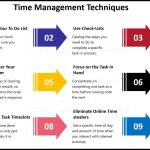Public Speaking Tips to Engage Your Audience
Have you ever watched someone give a talk and thought, “Wow, they truly have a gift!”? Great speakers make it look effortless, but behind the scenes, there’s a lot of prep work and some well-honed skills. The good news? Those skills can be learned! Whether you’re addressing a conference room or a stadium full of people, captivating your audience is key. Here’s a guide full of public speaking tips to keep your audience engaged from start to finish.
Know Your Audience
The first rule of engaging public speaking might seem deceptively simple: know who you’re talking to. Imagine having a conversation with a friend. You’d choose topics they care about, right? Apply the same principle to public speaking. Research your audience. What are their interests? What challenges do they face? Tailoring your content to match their needs creates instant relevance and engagement.
Open Strong
The beginning of your talk is crucial—it sets the tone for everything that follows. Start with a bang by telling a story, sharing a surprising fact, or posing a thought-provoking question. This doesn’t just grab attention; it creates a sense of curiosity and anticipation.
Keep Things Simple and Clear
When you’re an expert in a subject, it’s tempting to show off all you know. But a great speaker understands that simplicity is powerful. Avoid jargon and complex language. Instead, focus on clear, simple sentences that convey your points effectively. This approach makes sure everyone in the audience can follow along, regardless of their background.
Make It a Two-way Street
Lectures can be dull, so think dialogue, not monologue. Encourage questions or feedback. Depending on the setting, you can do this throughout your presentation or at dedicated times. Use polls, quizzes, or have the audience participate in activities. Interactive elements like these break the ice and create a dynamic flow.
Use Stories and Anecdotes
Humans are wired for storytelling. Anecdotes and personal stories create emotional connections. When you weave these elements into your talk, you make abstract concepts concrete and more memorable. People may forget the details of your data, but they’ll remember how your stories made them feel.
Master Your Body Language
Your words are crucial, but your body speaks volumes, too. Non-verbal cues like eye contact, gestures, and facial expressions can enhance your message or undermine it. Use open gestures to suggest inclusivity. Maintain eye contact with different parts of the audience to foster a sense of connection. And remember, a smile can be contagious!
Work on Your Pace and Tone
The rhythm of your speech can be a powerful tool to keep your audience engaged. Varying the pace and tone adds interest and emphasis. Speed up to convey excitement or slow down to draw attention to an important point. Silence can also be a potent force, giving the audience a moment to digest a particularly powerful point.
Be Passionate and Authentic
Passion is persuasive. When you speak about something you truly care about, it shows. Your enthusiasm can be infectious, and it’s one of the most potent ways to keep an audience engaged. But be authentic—don’t force it. Authenticity builds trust and rapport with your audience.
Utilize Visual Aids Wisely
Visual aids like slides or props can be helpful, but they need to support your message, not overshadow it. Make sure they’re simple and uncluttered. Use visuals to clarify complex points or to add impact to your words. And remember to keep facing your audience, not the screen!
Practice Makes Polished
Public speaking is an art, and like any art, it takes practice to perfect. Rehearse your presentation multiple times. This doesn’t mean memorizing it word for word—instead, become comfortable with the material and structure. Practicing helps you deal with nerves and makes you more adapt in case of unexpected issues.
Handle Q&A Sessions Gracefully
Questions from the audience offer a great opportunity to engage and interact, but they can be intimidating. Prepare for the kinds of questions you might receive in advance. Listen attentively to each question, and answer thoughtfully. If you don’t know an answer, it’s okay to admit it—offer to find out and get back to them.
Close with a Call to Action
Wrap up your talk not with a whimper, but with a call to action. What do you want your audience to do with the information you’ve given them? Whether it’s to enact a change, consider a new perspective, or simply to learn more, leave them with a clear next step to take.
Reflect and Seek Feedback
Every public speaking opportunity is a chance to learn and grow. After your talk, reflect on what went well and what could be improved. Seek out feedback from trusted colleagues or audience members. Use this to refine your skills for next time.
Stay Humble and Keep Learning

No matter how many times you’ve spoken in public, there’s always room for improvement. Stay curious and open to learning from others. Watch great speakers and learn from them. And always remember to evaluate and fine-tune your own approach.
Great public speaking doesn’t happen by accident. It’s a skill developed over time with dedication and practice. Engaging your audience is about connecting, sharing your passion, and conveying your message clearly and authentically. By focusing on these areas, you can become the kind of speaker who doesn’t just deliver a message, but who creates an experience that resonates long after the applause has ended.


